
Koan 27 Translation
Translating a Zen Koan into Ojibwe
no one:
me:
In this thread, I will translate a Zen koan from Classical Chinese directly into Ojibwe. Esperanto will also be made use of in an unusual way.
More seriously, I want to show how direct translation from Chinese differs from working off an English translation.

Here is the 27th koan from the Book of Serenity, in Classical Chinese. This is a koan from 12th-century China.
(I'm not including any of the koan commentary here.)

The English translation of the title is "Hogen Points to the Bamboo Blinds." Here is an English translation from thezensite.com (translator unattributed).
Let's return to the Chinese text now.

In Classical Chinese, each word is usually written with one character. (This is no longer the case in modern Chinese.) The text is thus read character by character. Traditional Chinese is written in vertical lines from top to bottom, and the lines are read from right to left.

The Chinese characters are tough to write and type, so I assigned each Chinese character a unique Esperanto name that has roughly the same basic meaning as the Chinese character.

Here is the koan rewritten with the Esperanto names of each character, along with a literal word-by-word English translation.
Compare the literal translation here to the English translation earlier. The Chinese style is quite different!

"Leĝo Okulo" (Law Eye) is a proper name composed of two Chinese characters. The English translation "Hogen" is from the Japanese reading of these two characters. The English translation conceals the fact that the name in Chinese is meaningful.

In this Buddhist context, Leĝo Okulo means "they who observes the dharma." Leĝo is the Chinese translation of the Sanskrit word "dharma," while Okulo refers, through metonymy, to the act of vision and observing.

"Dharma" has many meanings in Buddhism. Etymologically, it is a participle form of a Sanskrit verb meaning to hold or support. Dharma literally means "that which holds." In Buddhist terms, the dharma is that which holds up/supports people.

The name "Leĝo Okulo" therefore means "they who observes the things that support people." This is awkward in English, which is why the name was left untranslated. But the name can be translated literally into Ojibwe without difficulty.

Another translation issue with this koan is the Chinese character "monaĥo" (monk). In this case, translating directly from Classical Chinese will end up with a completely different result than referring to the English translation.

The English word "monk" comes from Greek μονᾰχός (monachos), which means "alone" or "solitary." Going from the English, a close Ojibwe translation would be "nezhikewizid" -- "they who lives alone."

The Chinese character "monaĥo" (monk), however, is from the Sanskrit word "sangha," which refers to an assembly or a community of people. Going from the Chinese, I think a better Ojibwe translation is "wiijiiwaagan" which means a person who goes along with others, a companion.

In short, the English word "monk" and the Chinese character "monaĥo" (monk) have opposite etymologies, leading to very different Ojibwe translations!

The third translation issue is the Chinese character "ekzemplo" (example). The Book of Serenity refers to koans with this "ekzemplo" character. The English translation given earlier translates this as "case," which is quite a vague word.

Chinese character "ekzemplo" is a combination of the character for "cowrie shell" and the character for "knife." Cowrie shells were used as money and for rituals in ancient China, India, and Africa.

Cowrie shells are also used ritually by the Ojibwe (!), which is surprising since cowries aren't found anywhere near where the Ojibwe live. The Ojibwe word for the shells is "miigis" -- translated as "Mide shell" or "whiteshell."

Anyway, the combination "cowrie shell" plus "knife" meant "money-knife" in ancient China, which came to mean a rule, law, standard, or norm. From there, it picked up additional meanings related to logical arguments, such as "example."

"Money-knife" is used to represent a koan because the way koans are carefully deliberated, discussed, and commented upon reminded people of legal proceedings. To translate this, we need a logical, legal word related to discussion. But in Ojibwe, we use a verb instead of a noun.

Last but not least, there is the final saying in the koan, which is expressed in just four Chinese characters. Classical Chinese has no inflections, each character has multiple meanings, and syntax is relatively free-form, so it is easy to indulge in Zen-like ambiguities.

The Ojibwe language, on the other hand, is heavily inflected and likes to be precise and unambiguous about what is being said. The translation challenge here is to get Ojibwe to channel the speaking style of a 12th-century Chinese Zen master.
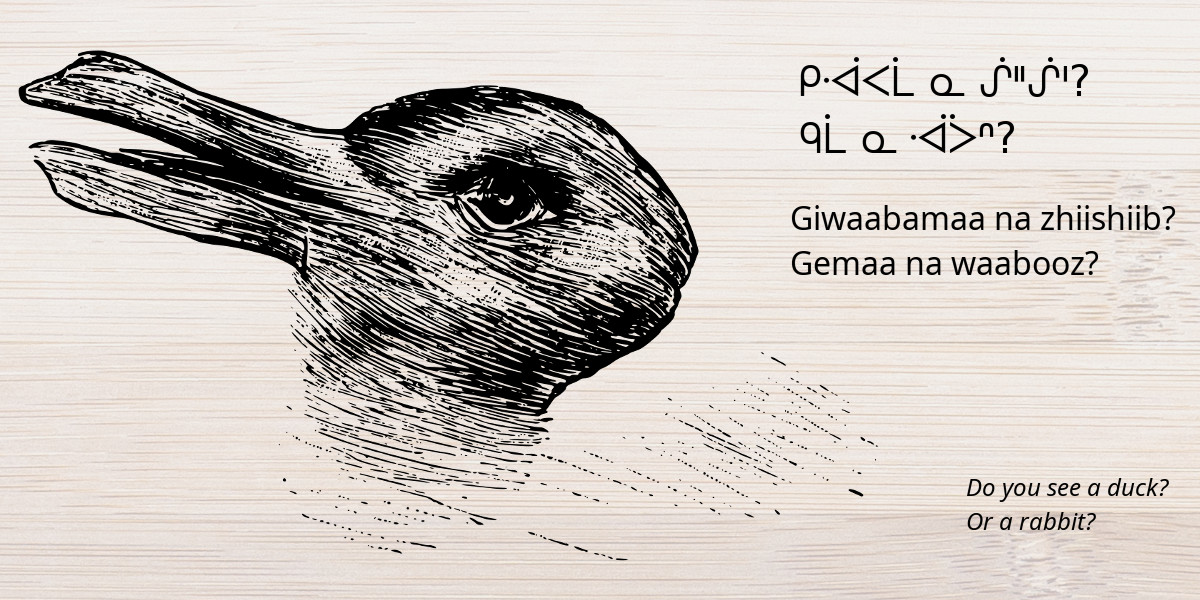
Unlike Chinese and English, Ojibwe doesn't let you drop the object of a transitive verb if you feel like it. You have to explicitly add an "actor focus detransitive" suffix to indicate that the object is being erased. Let's add it to Ojibwe verbs succeed/lose, see what happens.
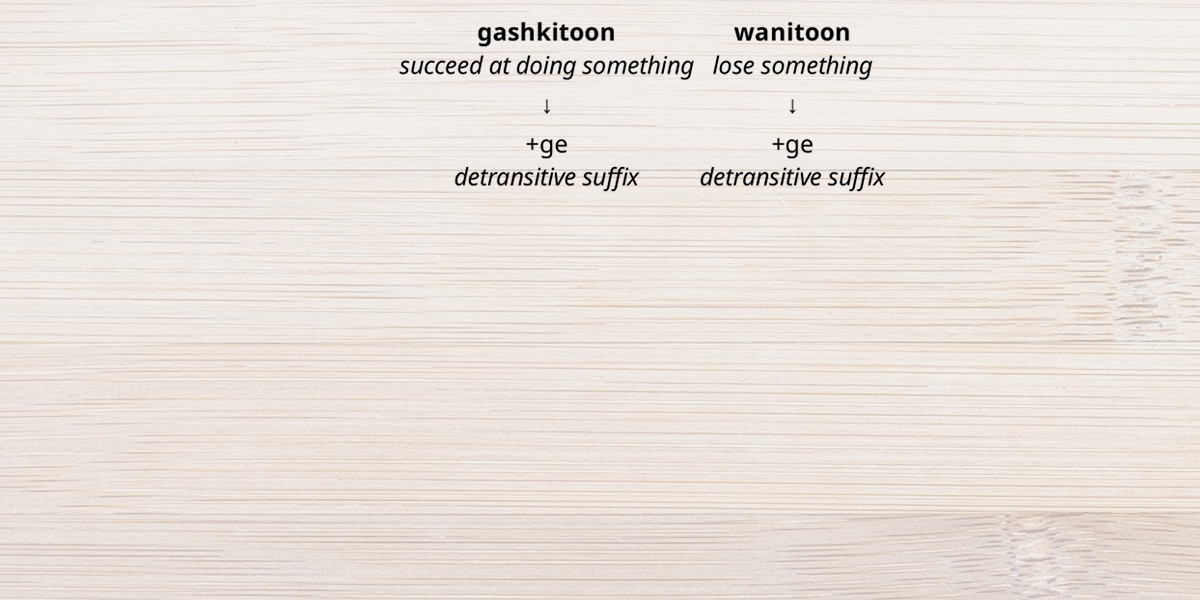
The suffix triggers a sound change in the verb stems. The new forms have [?] for the object because the suffix has erased it and made the verbs intransitive. It also turns out there is a lucky twist here ...
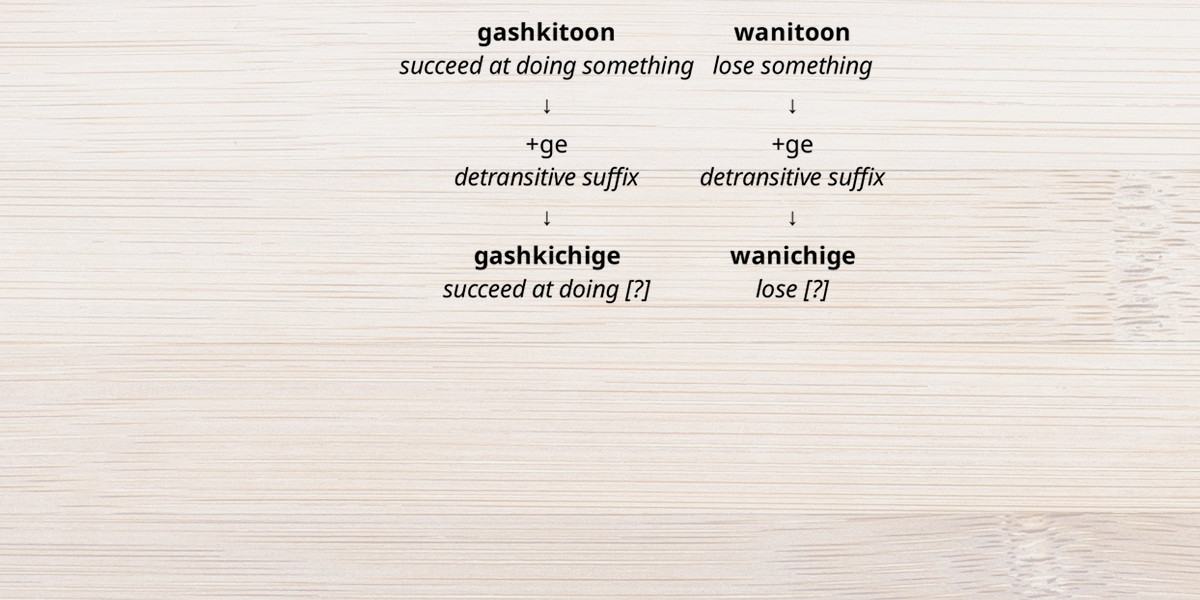
The derived verb forms are already verbs in their own right, with their own special meanings. But because we are linking the suceed/lose verbs so closely with derivation (and rhyming!), it becomes ambiguous whether we want the derived meaning or the lexicalized meaning.
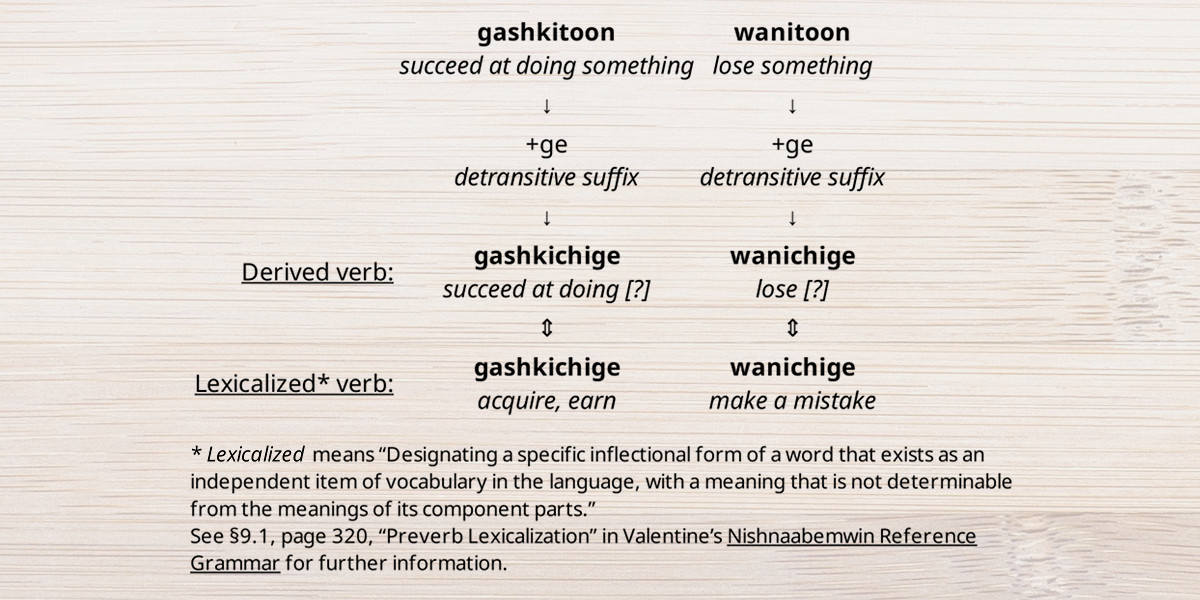
In short, the Ojibwe translation given here is ambiguous and can be interpreted in a number of different ways. Just like the original Chinese. Which is exactly what we want, because Zen.
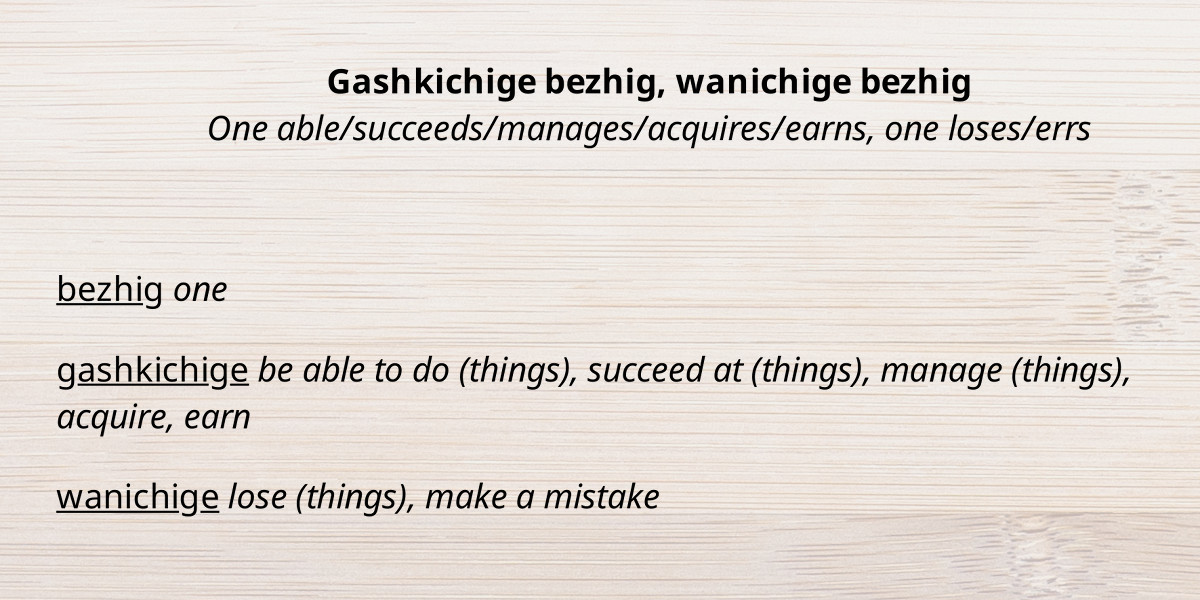
Here is my Ojibwe translation of the full koan. I think that Ojibwe does a better job of preserving the flow of the koan than the English translation given earlier.

Here is an overly literal English translation of the Ojibwe, followed by a polished English translation of the Ojibwe.

And finally, here is the Ojibwe translation in syllabics next to the original Chinese.




























